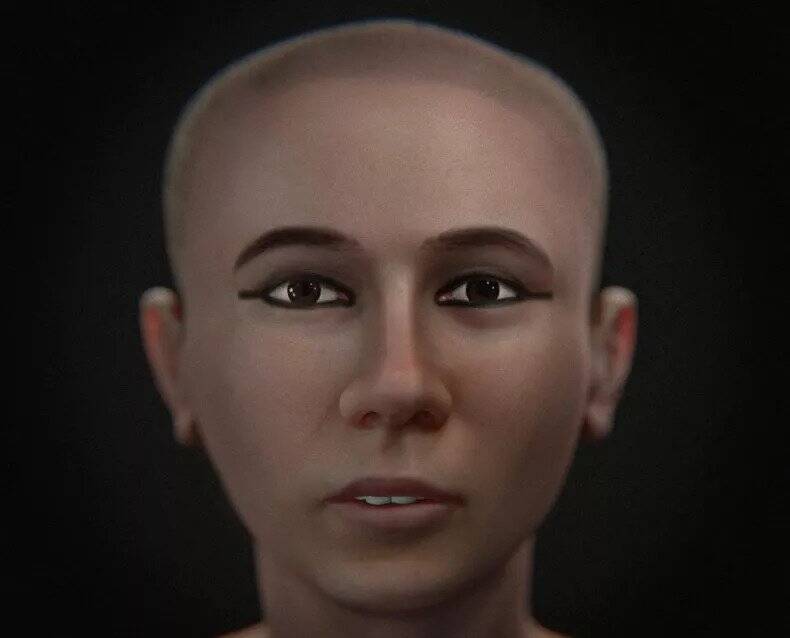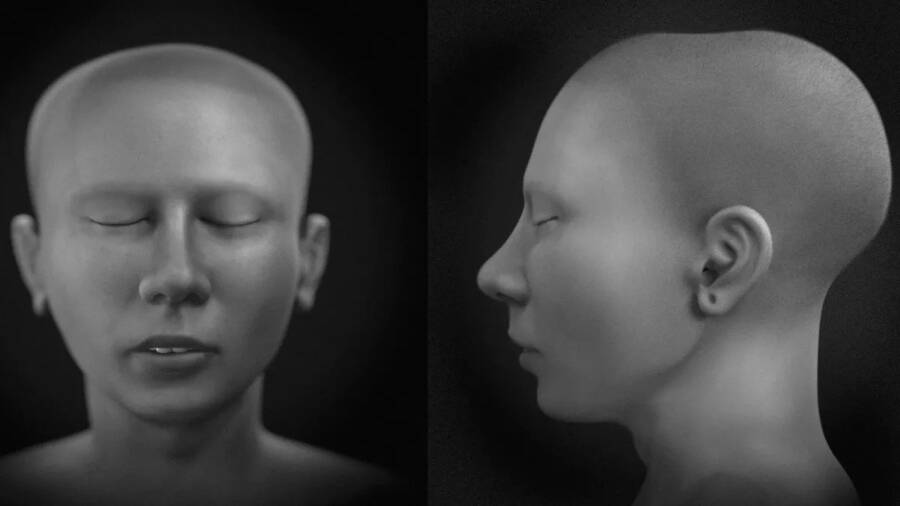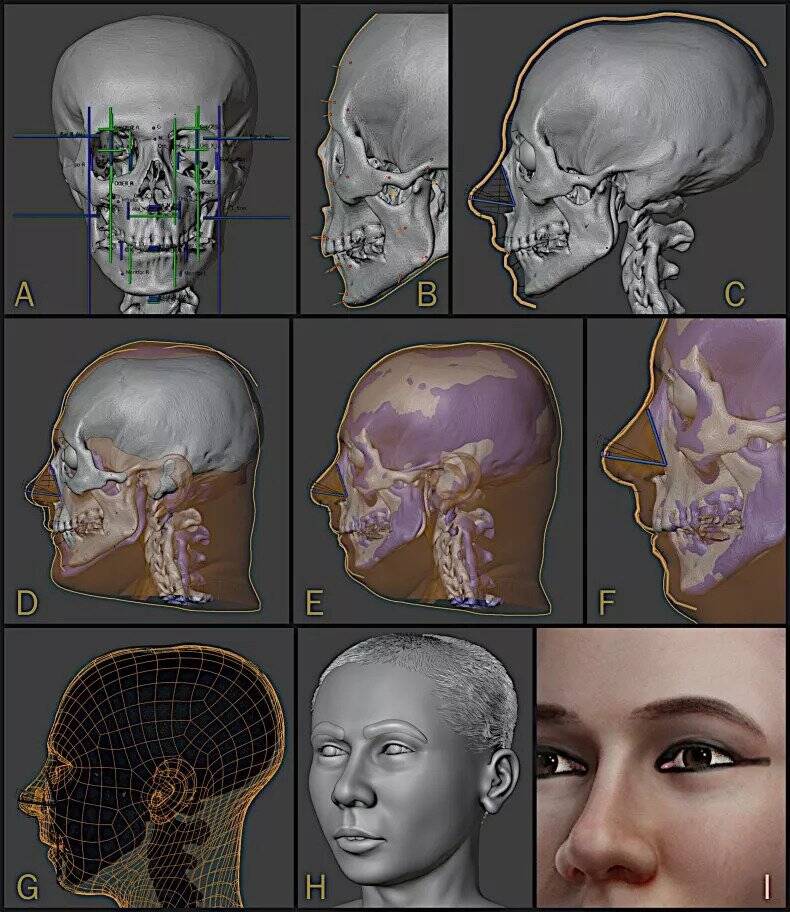The new facial reconstruction of King Tut, which used new technology and drew on old research, suggests that the young Egyptian pharaoh had the face of a "delicate" student.

C. MORAES ET AL./ITALIAN JOURNAL OF ANATOMY AND EMBRYOLOGYThe researchers found that King Tut had a peculiarly shaped skull and a very large brain volume.
King Tut’s mask is one of the most famous ancient Egyptian artifacts in the world. But what did the boy king, who died around 1323 B.C.E, actually look like? A new facial reconstruction has offered an answer.
According to Live Science, the team of international researchers who produced the facial reconstruction found that King Tut had an unusually large head. His skull was longer than normal, and his brain volume was larger than average (87 cubic inches vs. the average of 75 cubic inches).
“His skull has a particular shape; in our study the measurements showed affinities with skulls that underwent [skull reshaping], but this does not seem to be the case of Tutankhamun, because although it has a peculiar, elongated shape, everything indicates that it is a natural skull,” Cícero Moraes, a graphics expert and the co-author of a new study on the facial reconstruction, told Live Science. “Interestingly, its structure differs from the characteristics of other Egyptian mummies present in our database.”
Not only did King Tut have an oddly shaped skull, but the researchers also found that the boy king looked more like a student than a pharaoh.
“To me he looks like a young man with a delicate face,” Moraes told the Daily Mail. “Looking at him, we see more of a young student than a politician full of responsibilities, which makes the historical figure even more interesting.”

C. MORAES ET AL./ITALIAN JOURNAL OF ANATOMY AND EMBRYOLOGYThe researchers found that King Tut had a “delicate” face and that he resembled a student.
To make their determination of what King Tut’s face looked like, the researchers drew on previous scans and measurements of his mummy, and used new technology to produce the final image.
“In recent years, digital reconstructions have made a quantum leap in accuracy and detail,” Michael Habicht, another of the study’s co-authors, explained to Newsweek. “The skin and eyes in particular can be depicted much more lifelike than just a few years ago.”
The research team created two reconstructions. First, they made an “objective” grayscale image which depicted King Tut with his eyes closed. Then, they created a “humanization” version which showed him as he might have looked during his life in the 14th century B.C.E. This version includes King Tut with the styles of the time: a shaved head and dark eyeliner.
This is not the first time that reconstructions of King Tut’s face have been made, and the new reconstruction bears some similarity to past ones. Live Science reports that Betty Pat Gatliff, a forensic artist, created a reconstruction using a plaster cast of the pharaoh’s skull in 1983. And in 2005, a team of French, American, and Egyptian researchers also created a facial reconstruction that bears a strong resemblance to the new one.
“Our reconstruction is amazingly close to the one made by a French team a few years ago,” Habicht noted to the Daily Mail. “It also corresponds with the ancient depictions of Tutankhamun, especially with the head on the lotus flower from his tomb treasure.”

C. MORAES ET AL./ITALIAN JOURNAL OF ANATOMY AND EMBRYOLOGYThe researchers drew on both previous reconstructions and measurements and new technology to create their facial reconstruction of King Tut.
Born around 1341 B.C.E., King Tut (Tutankhamun) had a short and rather unremarkable reign. He became pharaoh at the age of nine upon the death of his father, Akhenaten, and promptly reversed his father’s efforts to have Egyptians worship only the sun god Aten. Under his rule, Egyptians abandoned monotheism and went back to worshipping multiple gods.
But King Tut didn’t accomplish much else as pharaoh. Around 1323 B.C.E., he died at the age of 18 or 19 under murky circumstances.
He might have been completely forgotten by history after that, but in 1922 archaeologist Howard Carter came across King Tut’s tomb — and its incredible riches. Carter later described it, writing: “[A]s my eyes grew accustomed to the light, details of the room within emerged slowly from the mist, strange animals, statues, and gold — everywhere the glint of gold.”
Carter also discovered King Tut’s famous mask, which has made the boy king one of the best-known Egyptian pharaohs.
Now, thanks to the facial reconstruction, we have a better idea of what King Tut looked like beneath the mask’s eyes of obsidian and quartz, and eyebrows and eyelids decorated with lapis lazuli.
After reading about the new facial reconstruction of King Tut, look through these fascinating facts about life in ancient Egypt. Or, go inside the unsolved mystery of how Cleopatra died.





